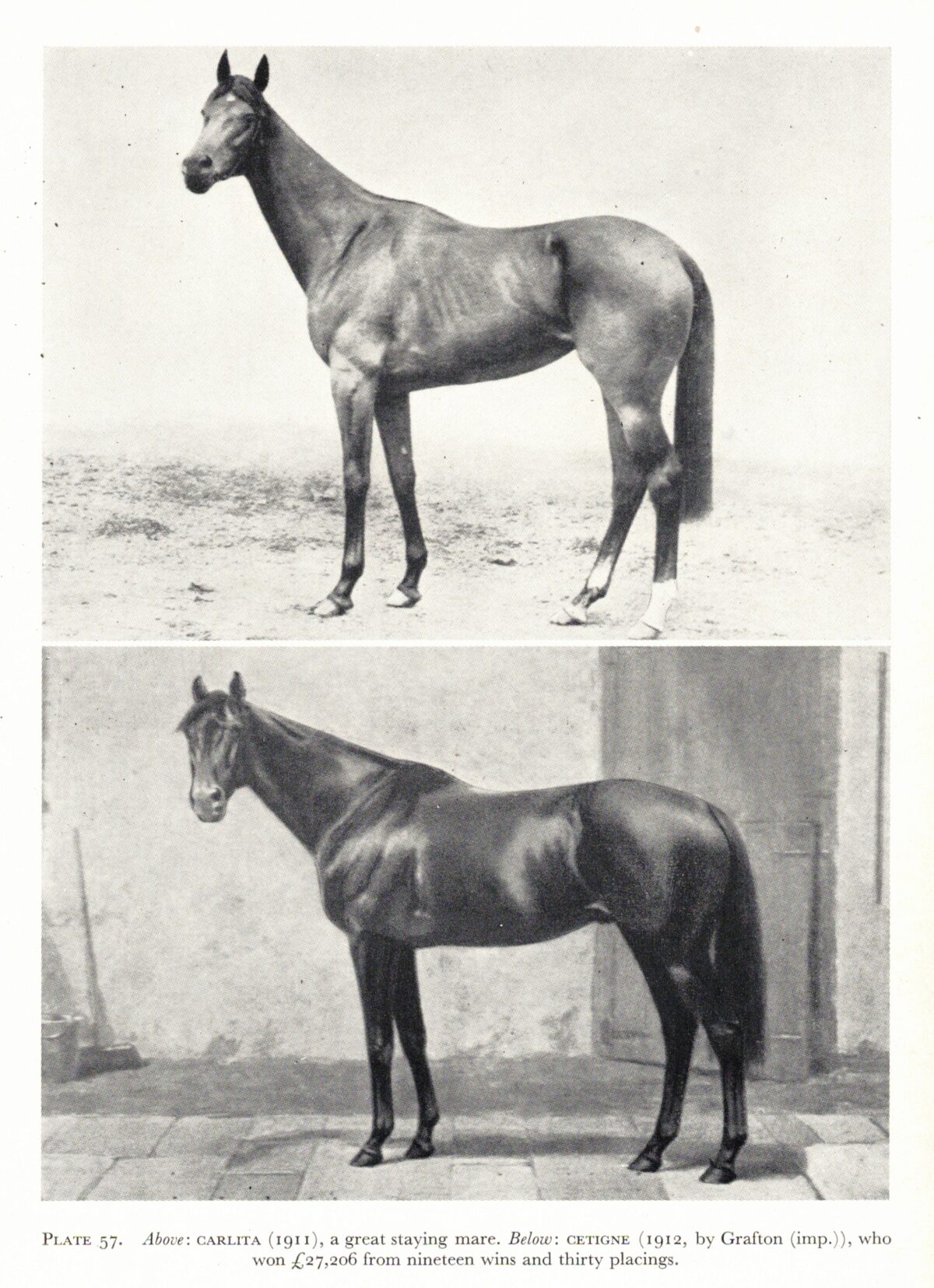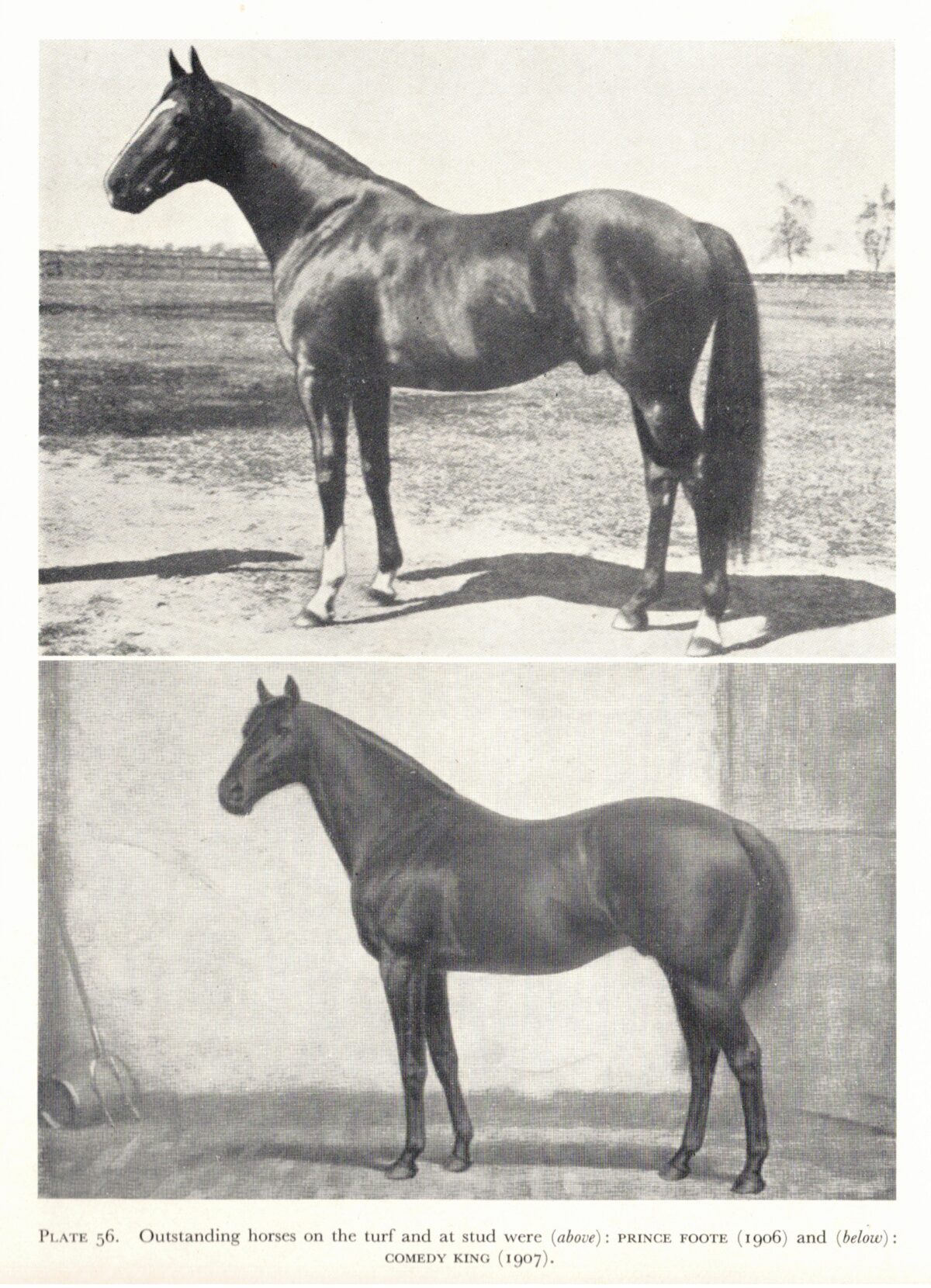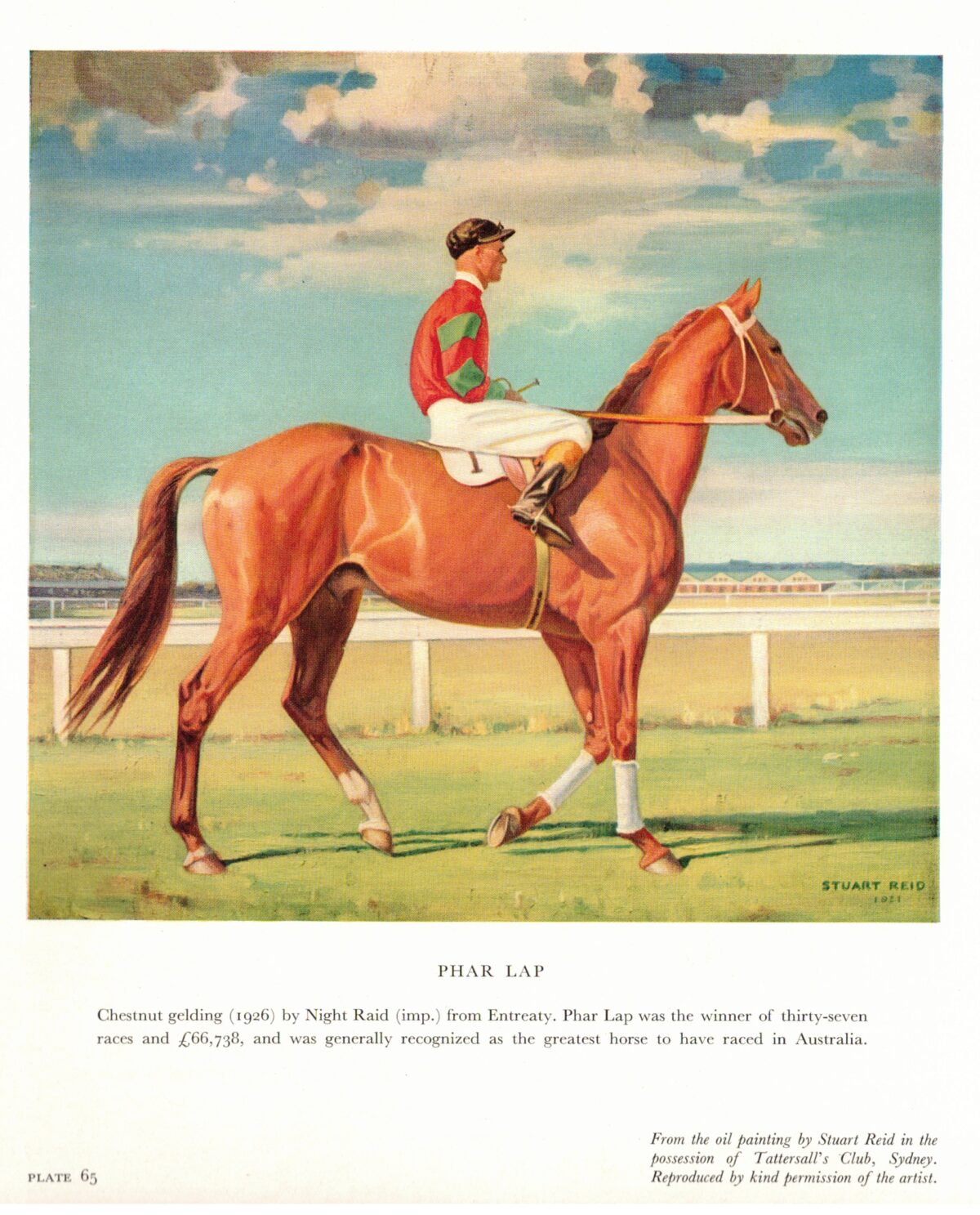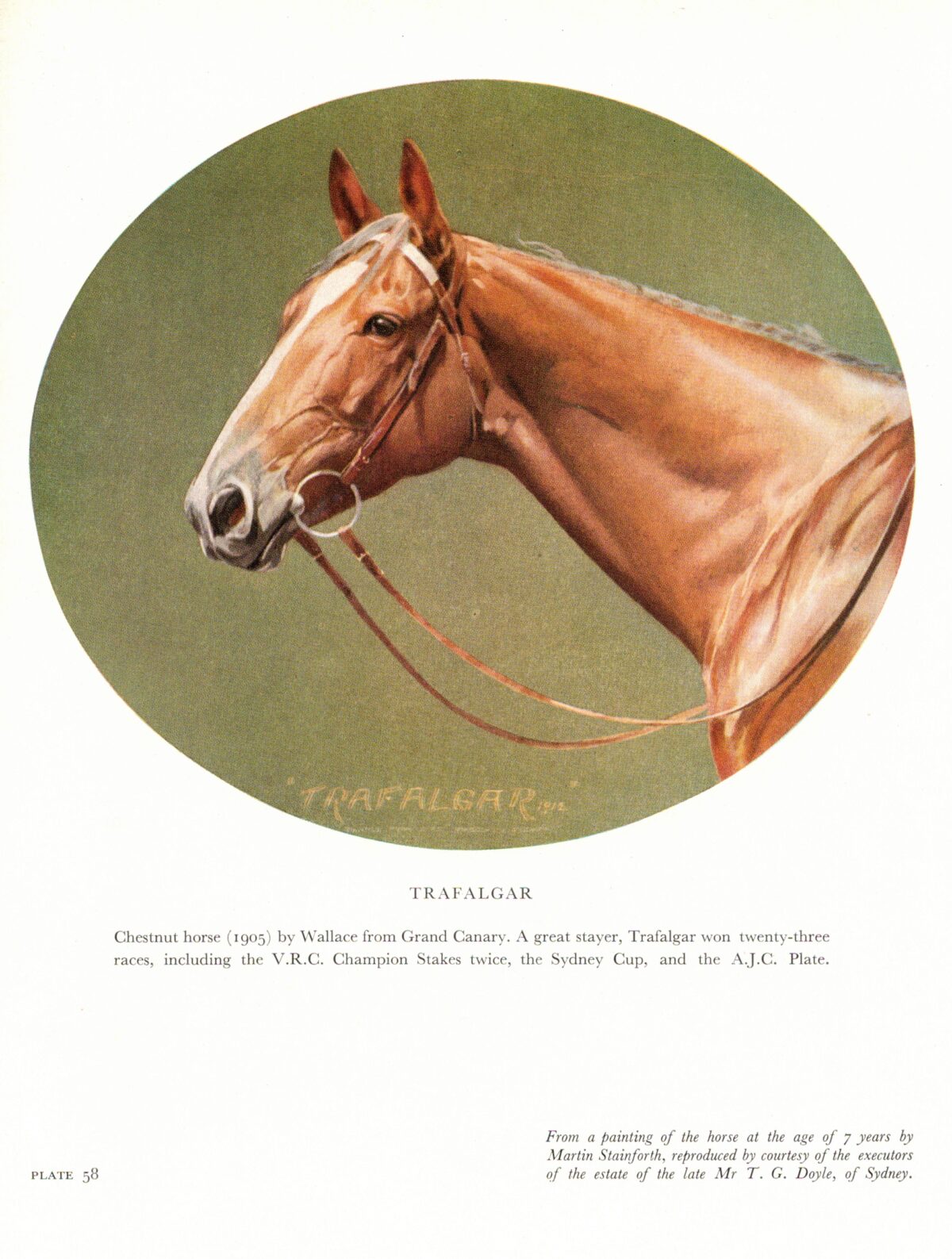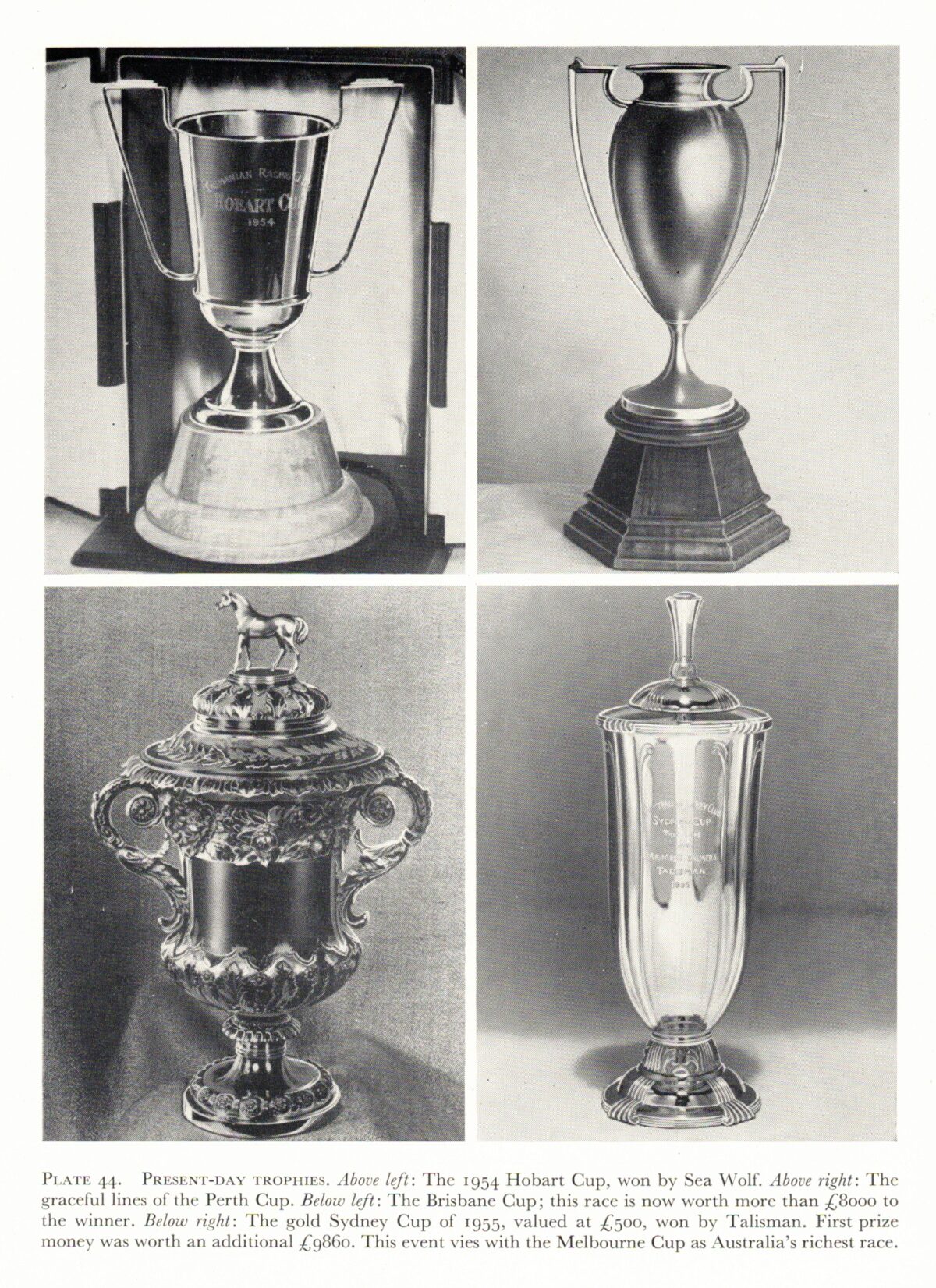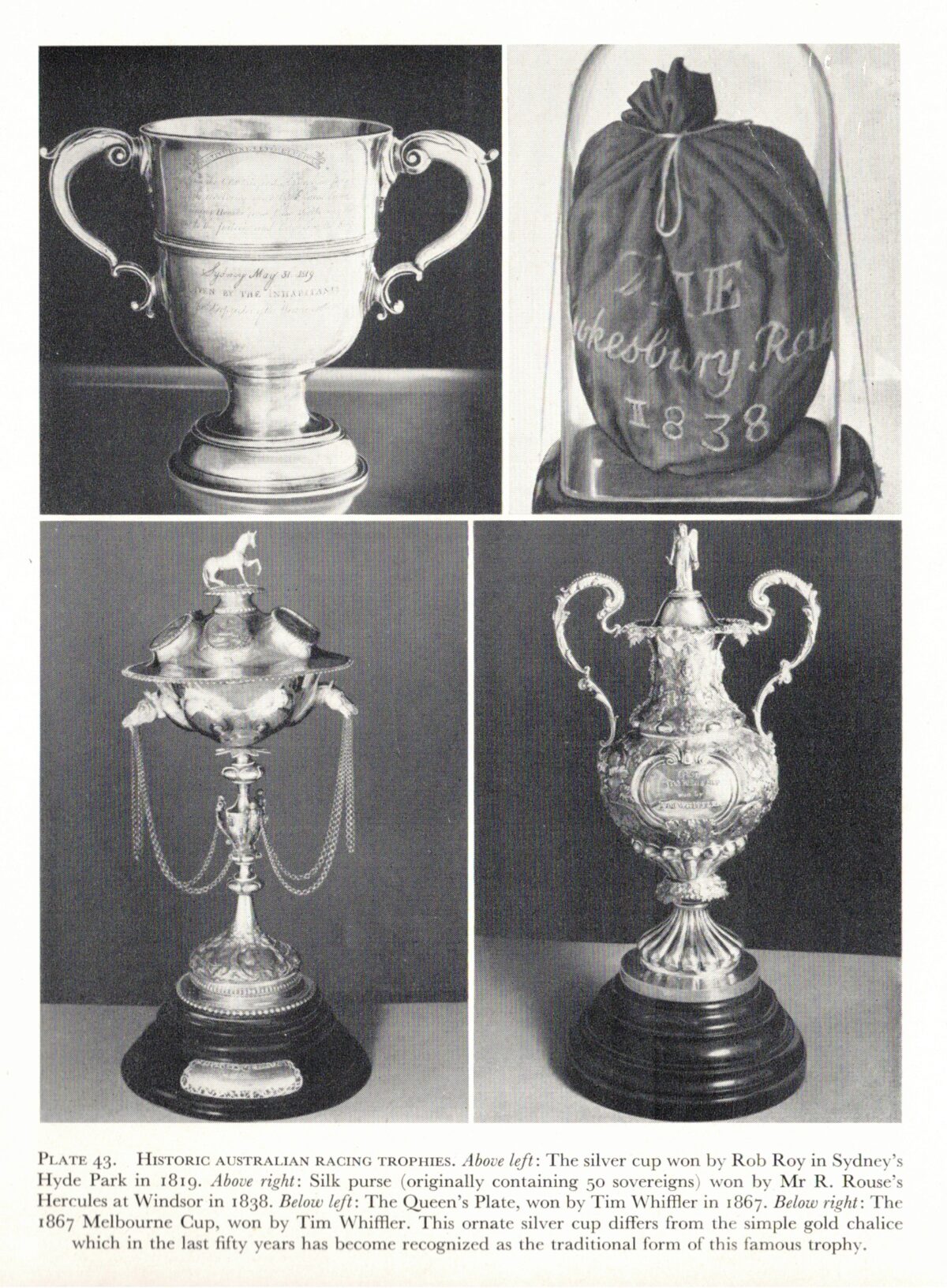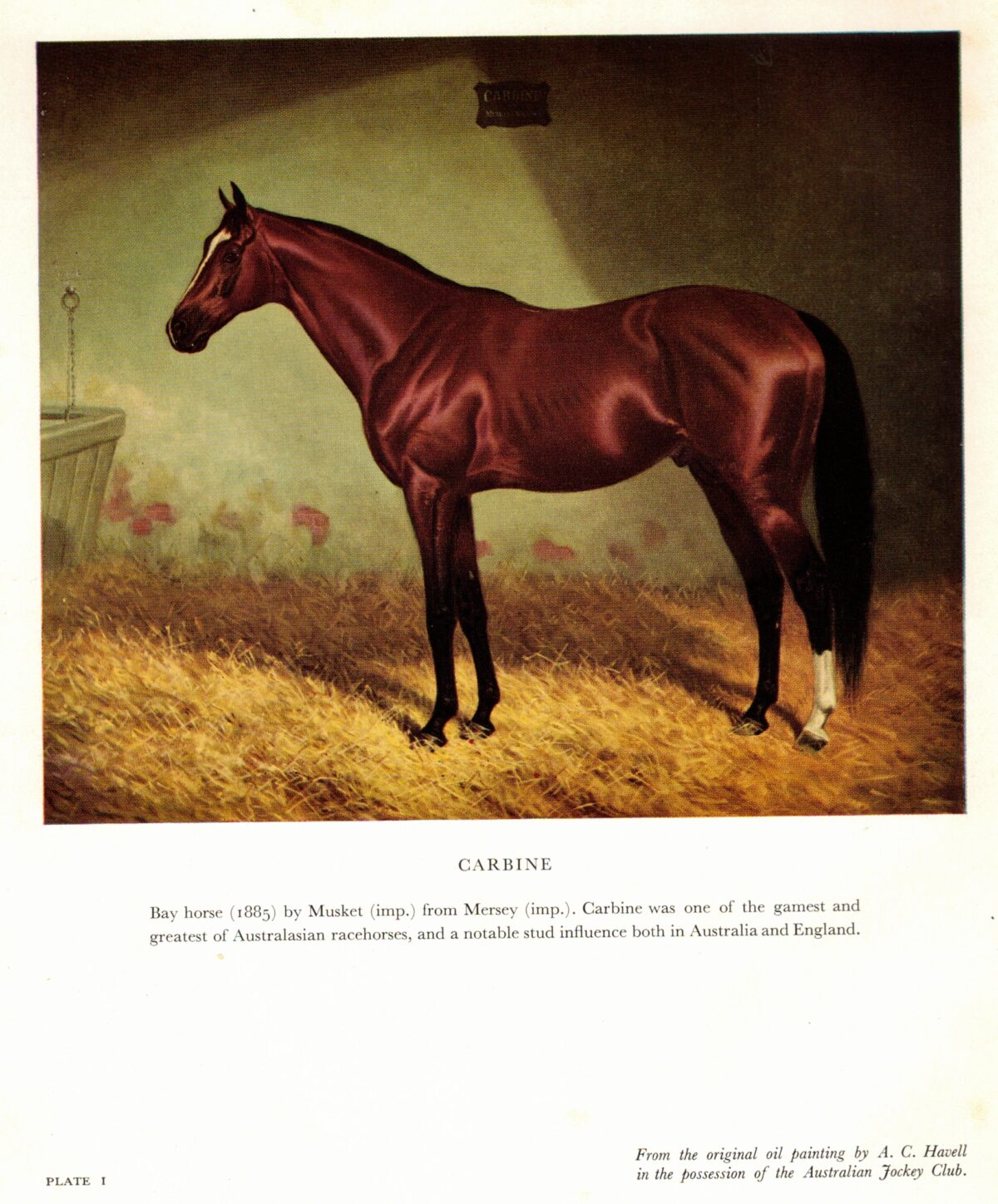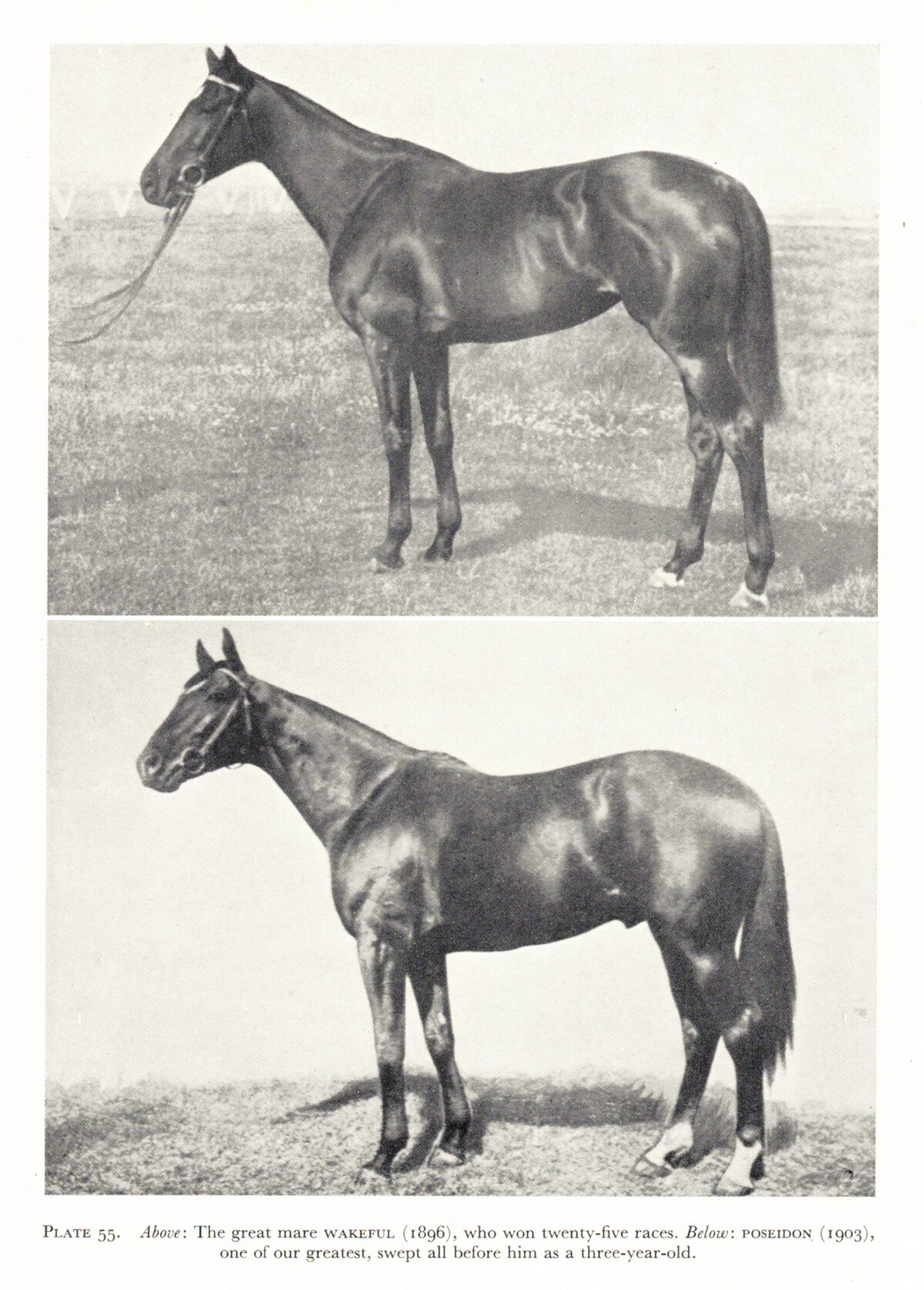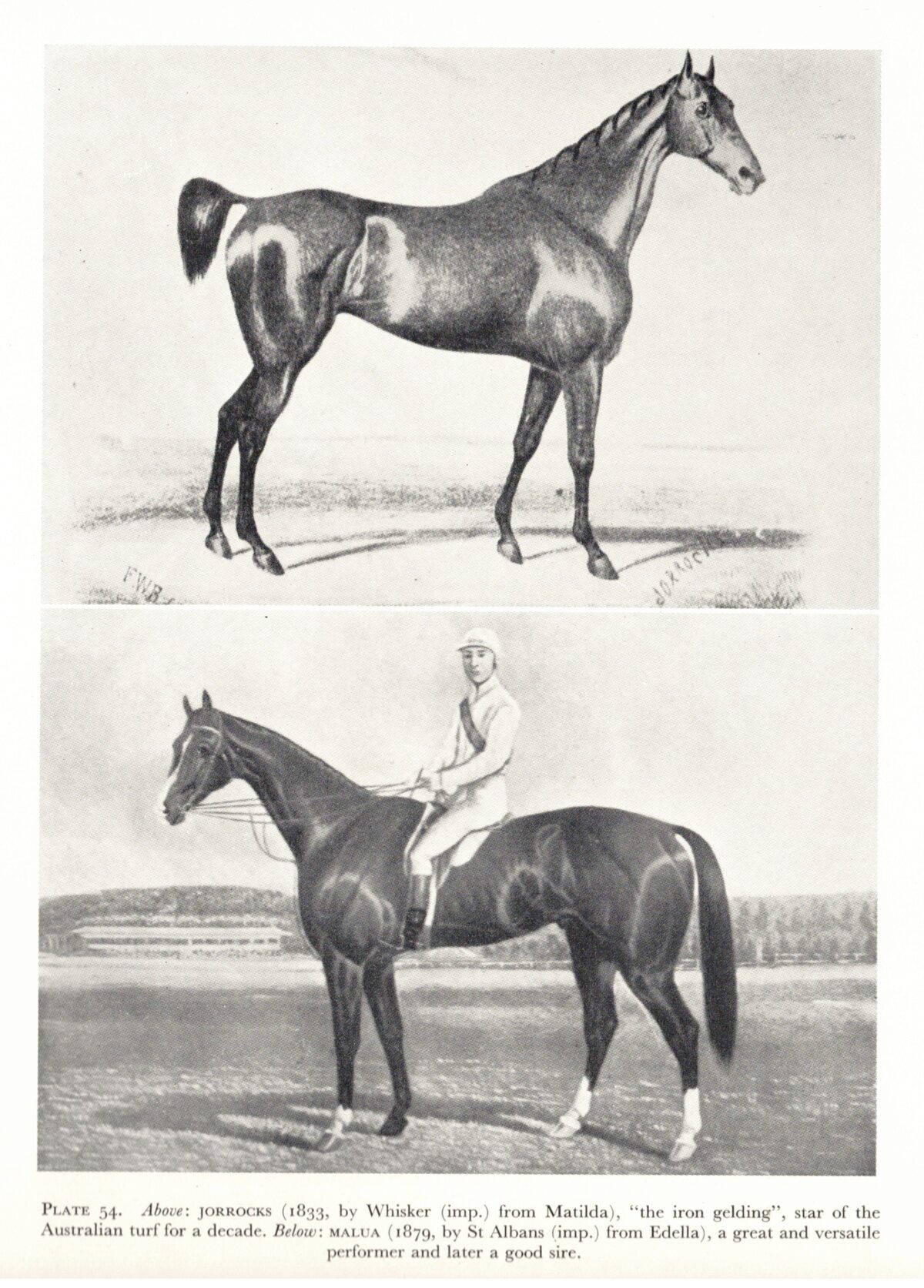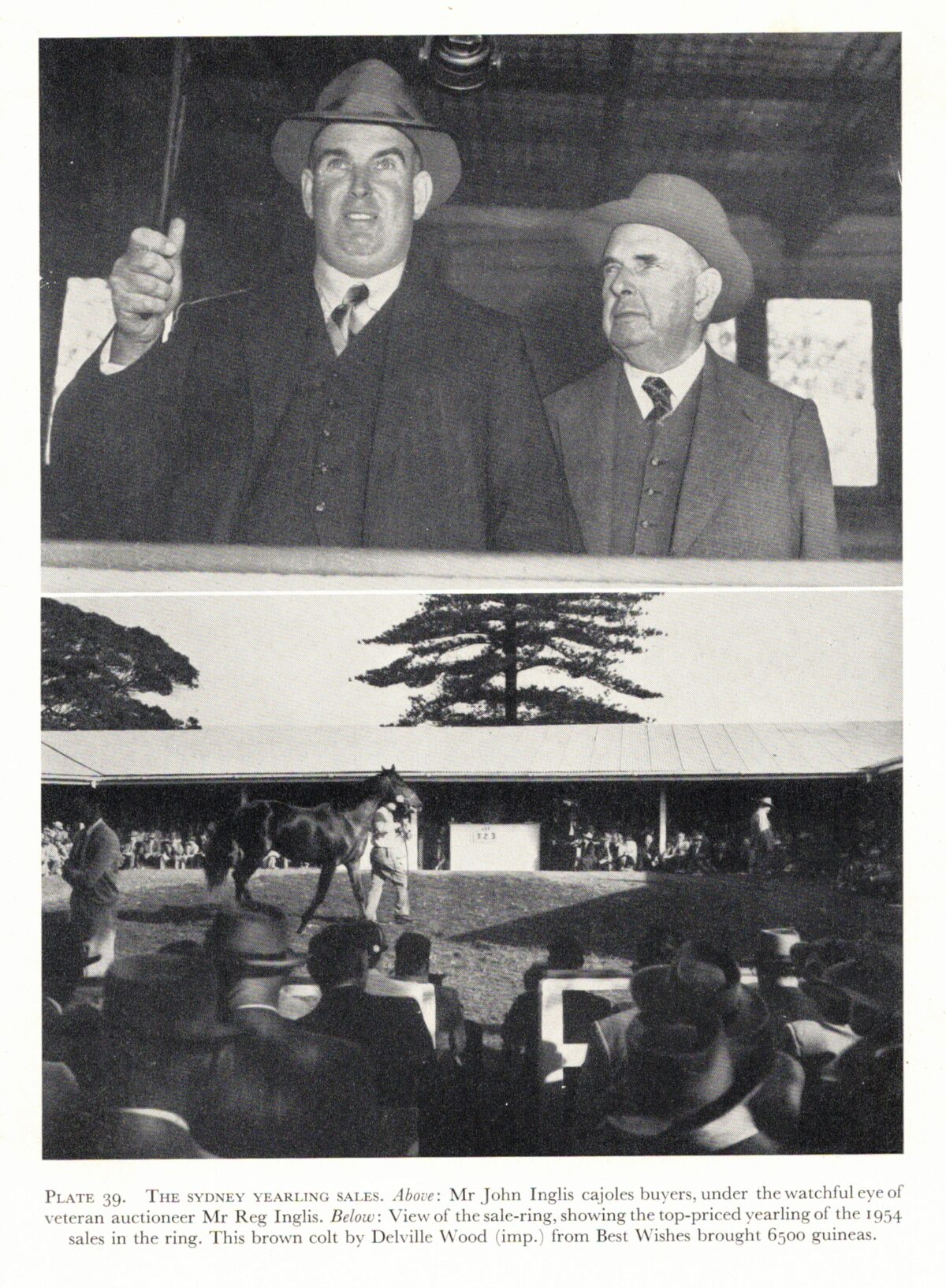Breeding the Australian Racehorse
Douglas M. Barrie: Famous Australian Racehorses
Featured Image: ‘Carlita’ & ‘Cetigne’
In the early years of settlement all TB breeding took place within the confined of the County of Cumberland. Thereafter it rapidly spread throughout the Continent.
See also: http://www.tbheritage.com/HistoricDams/ColonFoundMares.html
See also: http://www.tbheritage.com/HistoricSires/LeadingSires/AustLeadSires.html
Douglas M. Barrie’s The Australian Bloodhorse, first published in 1956, is a detailed and exhaustive study of the origins and history of the Australian Racehorse. The product of years of patient research and diligent study it provides an accurate and fascinating guide to thousands of our pure-bred horses since the beginning of settlement. The book fully encompasses and encapsulates the horse’s role in Australia’s development, overlanding, exploration, bushranging, romance, racing and at war.
By 1840 the ‘Thoroughbred Type’ may be said to have been fixed in Australia. The Arab influence steadily declined while the English thoroughbred was judged to be purer in type. Such was the importation of quality horses from the old world, and so favourable had the warm pastures of Australia proved, that by the 1840s thoroughbreds foaled and raised in Australia from sires and dams on Australian Studs were the equal in size, constitution and performance of their imported brethren.










